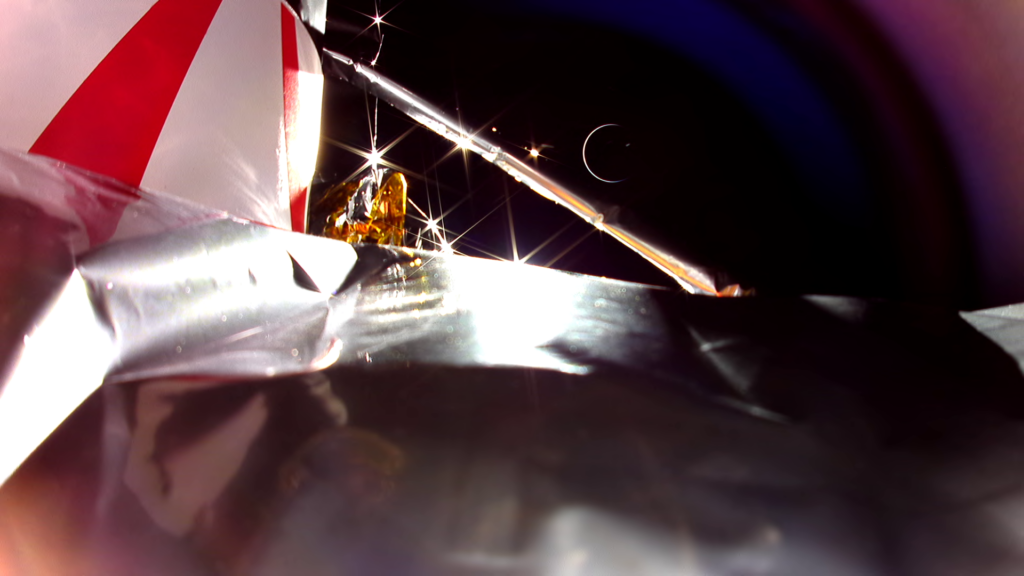A very brief thought here, in the context of the poorly-contrlled "Perigrine" spacecraft recently launched by the ULA/Vulcan mission.
wouldn't the most likely place for a leak be, in the isolation/ throttling valves from tank to motor, which would restrict the possible (plausible) thrust vectors a lot, and hence the acceleration vectors on the spacecraft? Or are they thinking that launch vibration has fractured a piece of pipe (or a fitting) somewhere, with an unpredictable vector? In which case, venting the tank through the (more predictable vector) nozzle would at least reduce the uncontrolled vector available from the uncontrolled leak?
I don't really want to get into spacecraft design, but having had to design and build more than a few plumbing systems for [multiple] gases from [multiple] tanks to [multiple] consumers, the obvious (to me design is to have an isolation valve on each tank, leading to a manifold for each gas, then a line from each manifold to each consumer, with an isolation valve on each of those lines. Throttle valve downstream of each isolation valve.
So, anything other than a break in the tank-to-[1st isolation valve] is controllable by at least one valve. And even a leak in that section can be mitigated by using all the consumers, throttled to counterbalance the uncontrolled leak, and depressurising the tank as fast as is safe. The list of "consumers" (attitude thrusters) includes counteracting pairs, so you can ramp those to the maximum, to negligible effect on the overall directional vector.
I guess I'm either going to have to get into spacecraft design (is my design's component count too high?), or drop this. But it intrigues me, and takes me back to designing gas plumbing networks for mud logging units 36 years ago.
Update - 2024-Jan-17
Last night I noticed a couple of messages on MPML: (Minor Planets Mailing List, https://groups.io/g/mpml/topics)
From: [redacted] Date: Mon, 15 Jan 2024 03:22:13 GMT
It seems peregrine has stopped leaking and is following a (mostly) newtonian
orbit. My slightly-over-2-hour arc suggests an impact somewhere in South America
in the morning of January 17 UTC (around 10:00 give or take a couple hours). The
orbit is currently too uncertain to even say if it will impact in the Atlantic,
Pacific, Brazil, or Peru, but it seems it's definitely somewhere around there
along a line at 10-12 degrees south. Orbital elements: Peregri
[SNIP Orbital elements and observations] Re: Peregrine observations?
From: [Redacted]
Date: Mon, 15 Jan 2024 04:41:53 GMT Hi Sam,
Good to see some more data.
Astrobotic has posted about the upcoming re-entry :
https://www.astrobotic.com/update-17-for-peregrine-mission-one/
Based on the data I've seen (combined with yours), I expect it to come in about a
day later, somewhere around latitude 10 south. It does still show a bit of odd
motion. I'm reluctant to say much about longitude until we see more data and the
fuel runs out. The uncertainty in re-entry time and longitude are linked; if
you've got a one-hour uncertainty in time, the earth gets to rotate 15 degrees
more or less. However, it shouldn't take much more data to get a precise
re-entry time/location.
Not living in the area, and having no exceptionally tall hats ... has anything happened? I'm not seeing anything on the news. The operating (and owning) company's website has an update that the lander has passed apogee (furthest point, "apo-" from Earth ("-gee") and is currently 183,000 miles from Earth. (That's a bit over a quarter million km in real money.) So I guess the second estimate for impact - Friday-ish is looking more likely. So I'll takem my extra-tall hat off then.
The Press Release doesn't estimate a landing date.
Hmmm, the [code] tag on Blogger doesn't do what I expected. Ah, I should have been using a [pre] tag pair. [pre] also being block-level, not inline. ... now I need to force line-breaks.
Update - 2024-Jan-19
On Wednesday, Astrobotic published an update describing their mission-terminating strategy combining a series of short main engine burns, and attitude adjustment to control the drift induced by the leak. This resulted an a landing ellipse between New Caledonia, Fiji and Vanuatu. (For the geographically challenged, that's in the south west Pacific.) Quoting a landing ellipse to 6σ sounds a touch optimistic for a spacecraft with an attitude-affecting leak.
On Thursday (2024-01-18) they published another update with an image taken of their target :
The first attempt to take this photo yielded an oversaturated image, with the Sun making the image too bright to see the Earth. As a result, the team precisely slewed the spacecraft to reposition the Sun to be hidden behind the thin payload deck strut just to the left of Earth, which produced the starburst effects on the vehicle and revealed the Earth’s crescent. This image is completely unaltered.)
 And just for entertainment, I'm trying the "rotate" option. If that works on Blogger. It did. So why did I have a note that it didn't?
And just for entertainment, I'm trying the "rotate" option. If that works on Blogger. It did. So why did I have a note that it didn't?But the ROTATEd DIV has a bad effect of laying out beyond the area of the post.
But will it lay out beyond these paragraphs? YES, it overprints them. I need to figure that out properly. I turned the ROTATE off. They're still flag-washing, I see. As if one's nation were anything to be proud of.
No comments:
Post a Comment
Please add any useful comments you have. Some HTML allowed. All comments go through moderation (because : spambots).